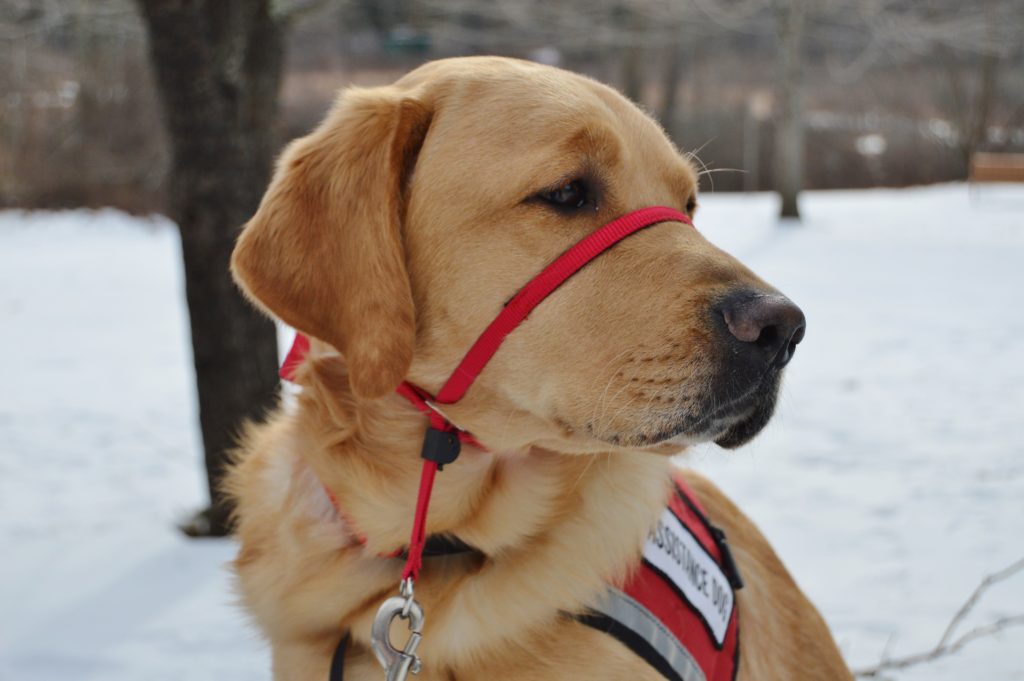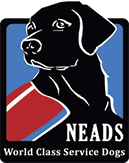What Does a Classroom Assistance Dog Do?
May 21, 2018
We’re sometimes asked about the difference between a Service Dog, an Assistance Dog for the Classroom and a pet therapy dog. While on the surface they may appear similar, there are three key differences.
TRAINING. All NEADS dogs have Service Dog training, which means they are trained to perform specific tasks for an individual with a disability (working “one to one”). Through the matching process, we sometimes determine that a dog would be suitable for partnership with a teacher, counselor, or someone in the ministry or a courthouse setting (working “one to many”). These are our Assistance Dogs. Franklin, for example, is an Assistance Dog.
PUBLIC ACCESS. Even though Assistance Dogs go through the same rigorous training and demonstrate the same “Service Dog behavior” as our Service Dogs and Hearing Dogs, they do not perform tasks directly for someone who is disabled. Therefore, they are not covered by federal laws protecting the use of service animals and do not have the right of public access, including entry into restaurants, shops, and places where dogs are typically not allowed to go. Instead, Assistance Dogs are typically allowed in a facility by invitation.
TASK WORK. Pet therapy dogs provide emotional support through their presence, so you may see these dogs visiting people in hospitals, schools, or senior centers. The NEADS Classroom Assistance Dogs, on the other hand, are trained in specific tasks that teachers can incorporate into their classroom teaching. The training also ensures that they are always under the control of the handler and that each task and command is consistently and reliably performed. NEADS provides teachers with highly personalized, hands-on training so they can successfully use the tasks most appropriate for their specific situation.
Here are some ways an Assistance Dog can help. The Assistance Dog is trained to look at children in the eye when given the command, “Say Hello.” This task can be used to help children begin and then sustain eye contact. With the command “Visit”, the teacher can use the dog to help a child calm down. With the 2-leash system the team is trained to use, the Assistance Dog can become a transitional object for the teacher to help a child move from one activity to another. The more teachers work with their Assistance Dogs, the more ways they discover how to best use the training and task work in their classrooms.
If you have more questions about Service Dogs, please visit our FAQ page, or submit your question here.

